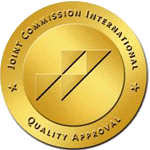Laboratory for Personalized Genomic Diagnostics
Laboratory for Personalized Genomic Diagnostics
About the Laboratory
The Genomic Laboratory of the Presidential Hospital is engaged in studying diseases at the DNA level and uses the most modern to date, the so-called “biochip” technology. The examination is conducted on New Sequence Generation (NSG) equipment - a new generation of gene sequencing. Nowadays, there are more than 900 different genetic tests. They allow to diagnose hereditary diseases (determination of a mutation in a gene in Duchenne muscular dystrophy, glycenosis), nerve and muscle diseases, and to detect a predisposition to diabetes, bronchial asthma, heart and vascular diseases.Genome sequencing, literally, allows to predict the life for several years ahead. But, first of all, genetic testing is necessary for those, whose relatives have suffered from any of cancer types. Cancer is not inherited. However, the basis of all cancers is a mutation in the genes. Our genomic laboratory offers modern diagnostic methods that will allow you to determine the type of mutation and prescribe the right treatment. The genomic laboratory of the Hospital is the first in Kazakhstan that has implemented a “bio-chip” technology for embryo examination and has already begun to cooperate with Kazakhstani IVF clinics. Genetic testing of the embryo helps avoiding congenital pathologies (Down’s syndrome, Patau syndrome, Edwards' syndrome) which happen to children, it increases the chances of pregnancy, reduces the number of unsuccessful IVF cycles and preserves a woman's health (due to a decrease in the amount of hormones taken).
Services of the Laboratory
DIAGNOSTICS OF NEUROMUSCULAR DISEASES
SPINAL AMYOTROPHY TYPES I, II, III, IV: SEARCH FOR DELETIONS IN THE SMN1 GENE
Every 35 person is an asymptomatic carrier of a mutation leading to SMA, and a sick child is born when 2 such mutations occur, on the mother's side and on the father’s side. This happens about 1 time per 6,000 births - in families where no one, as a rule, has heard about such a disease, where there were no sick relatives, harmful environmental factors - nothing that could suggest a high risk of genetic problems. The cause of the disease in most cases is mutations in the SMN1 and SMN2 genes located on chromosome 5.
Since this disease is hereditary, it is important for the correct diagnosis to be made that the geneticist collects the family history in detail and prescribes the necessary genetic testing.
Important! When confirming the diagnosis in the family, it is necessary to conduct a genetic examination of the patient’s close relatives.
Unfortunately, to date, there is no specific treatment for the disease. Only symptomatic therapy is possible: physiotherapy, massage, etc.
For families who have already experienced this disease and want to have healthy children in the future, there are several options for prevention: prenatal diagnosis, the use of donor sperm and eggs, preimplantation genetic diagnosis (PGD). PGD allows to examine the embryos obtained during IVF, even before pregnancy and choose the one that did not inherit the disease. More and more families in the world prefer this format of prevention.
TO LEARN ABOUT THE RISK, WITHOUT WAITING FOR THE BIRTH OF A SICK CHILD, YOU can use genetic screening, developed by the Hospital's laboratory, for the carrier of mutations that lead to SMA.
NAME OF THE STUDY
Molecular genetic diagnosis by MLPA of large deletions/duplicates in the SMN1 and SMN2 genes associated with spinal muscular atrophy
In accordance with international clinical guidelines, a genetic examination to determine large deletions/duplications in the SMN1 and SMN2 genes is performed if the patient has clinical symptoms characteristic of this disease, as well as relatives.
- To verify the diagnosis of “spinal muscular atrophy” in the presence of the patient’s characteristic clinical symptoms
- To assess the severity of clinical manifestations and prognosis of spinal muscular atrophy
- To assess the risk of having a child with spinal muscular atrophy or a carrier of its genetic mutation
- In case of suspected spinal muscular atrophy of Werdnig-Hoffman, Kugelbeger-Welander on the basis of anamnesis and clinical symptoms
- If spinal muscular amyotrophy is suspected
- In the differential diagnosis of motor neuron disease
- In the differential diagnosis of muscle weakness
- In case of early detection of the disease in relatives
- In family planning - to assess the genetic risk to the unborn child
| Exon 7 of the SMN1 gene | 2 copies of the 7 exon of the SMN1 gene were detected |
| Exon 8 of the SMN1 gene | 2 copies of the 8 exon of the SMN1 gene were detected |
| Determining the number of the SMN2 gene copies |
Number of the SMN2 gene copies – 1 copy of the gene Number of the SMN2 gene copies – 2 copies of the gene Number of the SMN2 gene copies – 3 copies of the gene Number of the SMN2 gene copies – 4 copies of the gene |
- If the mutation is detected in both copies of the gene (in both
chromosomes), it leads to the development of spinal muscular atrophy - Detection
of a violation in one chromosome indicates a carrier, the disease does not
occur, but two carriers have a risk of having children with the pathology - Absence
of a mutation in both copies of the gene indicates that there is no risk of
developing spinal muscular atrophy in both the person and children
- To obtain a
conclusion on the result of the examination, you should consult a geneticist
- Venous blood
- Preparation for
the study is not required
Duchenne/Becker myodystrophy is caused by a mutation in the gene encoding the dystrophin protein (DMD gene). It refers to hereditary diseases with X-linked recessive, it affects 50% of boys, while women can be carriers of the damaged gene. In about 2/3 of cases, the son receives a damaged chromosome from the mother carrier, in the remaining cases, the disease occurs as a result of a primary mutation (de novo).
The DMD gene consists of 79 exons. In muscular dystrophy, mutations (most often deletions) of one or more exons of the gene are detected, less often point mutations or duplications. This study analyzes the mutations of all exons from 1 to 79. Duchenne myodystrophy (MD) most often manifests itself at an early age of 2-5 years and is characterized by progressive muscle weakness, muscle atrophy, often accompanied by cardiomyopathy and impaired intelligence. At the initial stages of MD, the proximal parts of the muscular system (the muscles of the hip, pelvis, and shoulder girdle) are mainly affected, but with subsequent progression, all parts of the muscular system are affected. The biochemical marker of the disease is an increased (100-200 times) level of creatine phosphokinase (CPK) in the blood. In carriers of the damaged gene, the level of CPK is also slightly increased.
NAME OF THE STUDY
Determination of a mutation in the DMD gene in Duchenne myodystrophy by MLPA
What is the study used for?
- In accordance with international clinical guidelines, a genetic examination for Duchenne/Becker myodystrophy is performed if the patient has clinical symptoms characteristic of this disease, as well as relatives and children of the patient
- In the case of suspicion for Duchenne/Becker myodystrophy
- In the differential diagnosis of muscle weakness
- In the differential diagnosis of muscle cramps and myoglobinuria
- In case of early detection of the disease in relatives
- In the family planning
Genetic examination is the main method of confirming the diagnosis and is based on the detection of deletion or duplication of one or more exons using the method of fragment analysis in the DMD gene.
Normal values: Pathological deletions and duplications of exons 1-79 in the DMD gene were not detected.
Positive result
- Deletion/duplication detected in the DMD gene. Diagnosis of Duchenne/Becker myodystrophy confirmed
What can affect the result?
- The DMD gene responsible for Duchenne/Becker myodystrophy is located at the Xp21.2-p21.1 locus and consists of 79 exons. In 60% of cases, mutations are extended deletions (from one to several dozen exons), in 10% of cases - point mutations and in 30% - duplications. If a point mutation is suspected, exome sequencing is required.
- To obtain a conclusion on the result of the examination, you should consult a geneticist
- Venous blood
- Preparation for the study is not required
- 8 (7172) - 70 - 81 – 34
- Intestine Microbiome analysis is a simple, non-invasive, and effective way to find out, using advanced molecular genetics technologies, how many beneficial bacteria you have in your large intestine. If you count by weight, then in the body of an adult [microbes] on average about one and a half kilograms. This makes our microbiota one of the largest organs, which rivals the brain in weight and is only slightly inferior to the liver. The bacteria in the gastrointestinal tract that make up the gut microbiome play a vital role in your immune system, thyroid function, bone health, and overall health. A complex network of lymphoid cells, along with beneficial bacteria in the small intestine, help fight infections and regulate the immune system. The beneficial bacteria found here also produce key nutrients such as vitamins and fatty acids. In fact, it has been estimated that intestinal bacteria provide up to half of the daily intake of vitamin K. These bacteria also help create movement in the colon to move the contents through the intestines. However, when beneficial microorganisms multiply to numbers higher than normal, or colonize the small intestine, they feed on carbohydrates from our food, creating excess gas, bloating, and inflammation that affect our absorption of nutrients.
- The analysis also detects the presence of pathogenic microorganisms, such as yeast, parasites and bacteria, which contribute to chronic diseases and digestive disorders. Fortunately, once you start to control and restore the natural balance of your gut, you can eliminate these frustrating digestive symptoms.
- The human body is a flawlessly designed machine designed to function in a certain way and treat itself intelligently. Unfortunately, the average person gradually abandons the natural design of the body from an early age, eating unnatural foods, sitting all day, or living in a high-stress environment. There are also medications that affect or disrupt the normal intestinal flora, such as antibiotics, acid-blocking medications, and steroids. All this has led to an epidemic of chronic diseases in the world.
- Do not accept pain, fatigue, inability to concentrate, or obesity as normal! If you want to feel better, work better, and get rid of your drug addiction, a study of the gut microbiome can help you. The study report provides useful information about which prescription and natural products are most effective against certain body strains found in a stool sample. Gut health is a window into our overall health, and this advanced test provides a lot of information about our gut microbiome. Thanks to the recommendations made, you will be able to improve the overall condition of the intestine and the state of the immune function of the intestine.
- Dear patients! Now you have the opportunity to get the opinion of a qualified geneticist based on the results of genetic research. The conclusion of the geneticist includes an explanation of the significance of the identified enterotype, possible pathogenetic mechanisms associated with the development of certain conditions, individual risks of developing pathological conditions, and recommendations for prevention, diagnosis, and possible approaches to patient management.
- Microbiome research and consultation with our team of doctors, medical geneticists, gastroenterologists, and nutritionists can set you on the path to optimal health and wellness!
- Molecular-genetic assessment of the ratio of microorganisms (microbiome) in humans
- Feces collected in a sterile plastic container
- One day before the test, limit the intake of plant foods
- 8 (7172) 70-81-34




